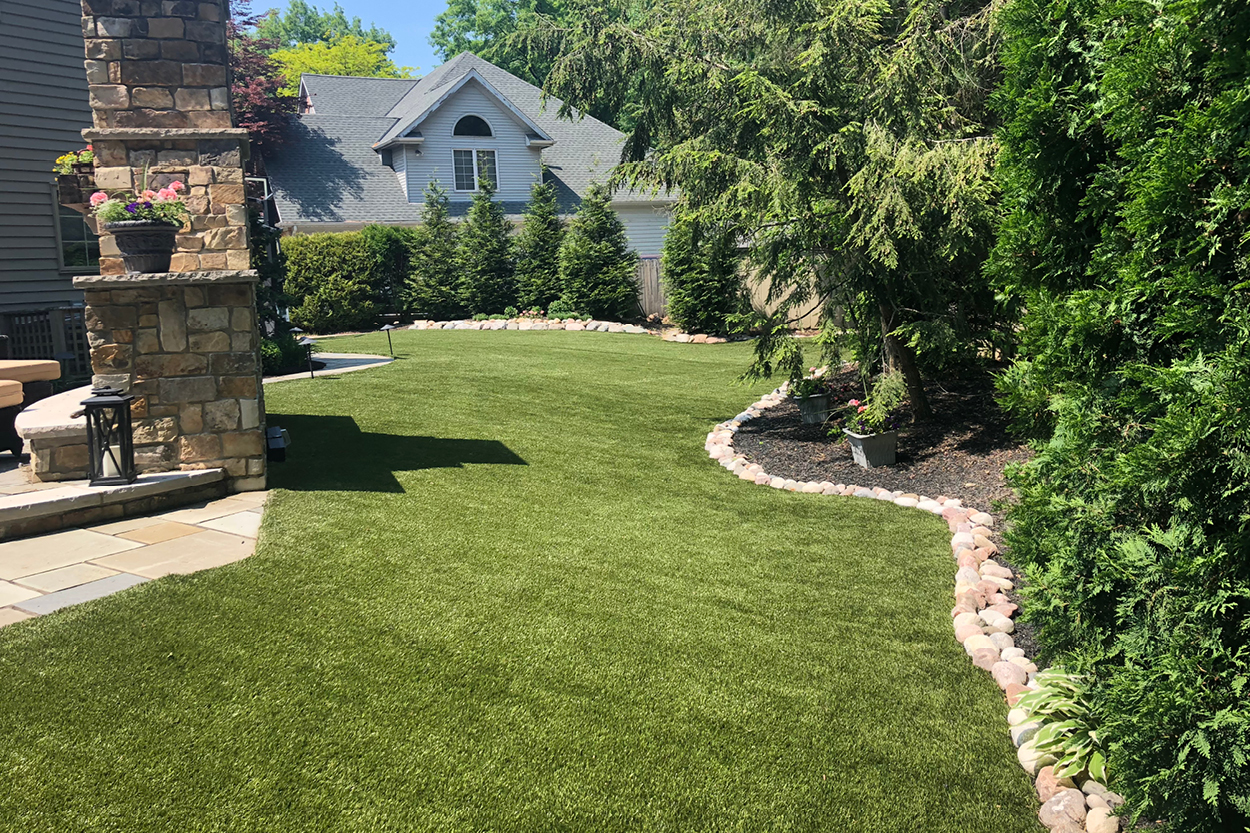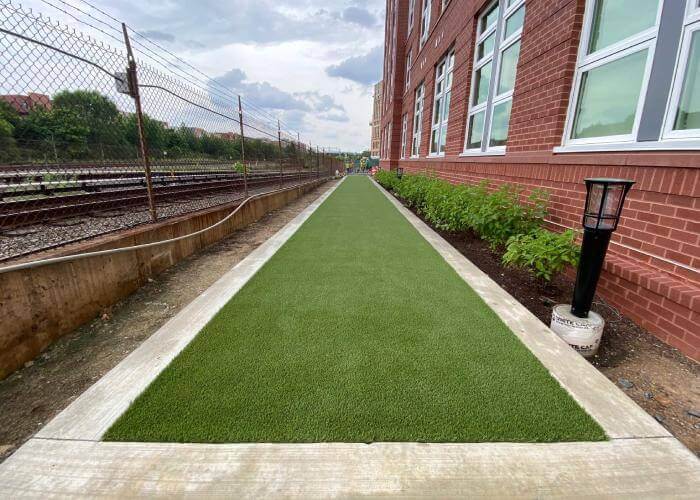Comprehending Exactly How Fabricated Turf Works for Your Home and Garden
Artificial grass has actually emerged as a useful solution for house owners seeking to improve their outdoor spaces without the worries of typical grass maintenance. The ramifications of choosing artificial lawn prolong beyond plain appearance; they touch upon ecological factors to consider and long-term sustainability.
Advantages of Artificial Lawn
Recognizing the growing appeal of artificial lawn, it is important to discover its many advantages. One of the most significant advantages is the reduction in maintenance requirements. Unlike all-natural turf, artificial lawn does not require watering, fertilization, or mowing, which translates to time and expense financial savings for property owners. This low-maintenance option is specifically enticing in regions with restricted water sources, as it conserves water and reduces overall environmental impact (Artificial turf companies).
Additionally, synthetic grass offers a consistently environment-friendly and lush look throughout the year, no matter climate condition. This visual charm improves the aesthetic top quality of any type of landscape, making it an eye-catching option for houses. Moreover, synthetic turf is sturdy and designed to endure heavy foot traffic, making it an optimal solution for households with youngsters and pets.
Safety is one more essential consideration; contemporary synthetic grass is commonly made from non-toxic products and incorporates shock-absorbing technologies, reducing the threat of injuries throughout play. Synthetic turf is immune to weeds and insects, eliminating the need for chemical therapies, thus promoting a healthier outdoor atmosphere. On the whole, the benefits of fabricated grass make it an engaging option for improving home and garden spaces.
Installment Refine Overview
When considering the installment of synthetic grass, a methodical method is essential to ensure optimal results. The setup procedure commonly begins with complete website prep work, which entails clearing the area of any kind of existing yard, debris, and rocks. This step is essential for developing a stable and degree foundation.
Following, it's crucial to examine the water drainage capabilities of the location. Proper drainage is important to avoid water pooling externally, which could lead to premature wear or issues with mold and mildew. If required., this might need excavation and the setup of a drainage system.
Once the site is prepared, a base layer is installed, normally including crushed stone or disintegrated granite, compressed to create a solid surface. After accomplishing a smooth base, a geotextile material is put down to prevent weed growth.
The final stage includes laying the synthetic grass itself. The grass rolls are placed, cut to fit, and safeguarded at the joints utilizing glue or specialized lawn tape. Ultimately, infill materials may be used to enhance stability and improve the total look. Correctly following these steps will lead to a resilient and visually pleasing man-made lawn installation.
Types of Synthetic Grass

Among the main categories is household grass, which is frequently made use of in yards, backyards, and play areas. This kind typically features a soft structure, making it secure for pet dogs and youngsters. Industrial turf, on the other hand, is crafted for high-traffic locations, such as sports fields and metropolitan parks. It offers longevity and strength, ensuring it withstands extensive usage while preserving its appearance.
Another classification consists of landscape lawn, which mimics natural yard closely to boost the aesthetic appeal of yards and exterior spaces. In addition, putting eco-friendly grass is especially developed for golf fanatics, featuring a much shorter pile elevation and a smooth surface for an optimum placing experience.
Finally, pet-friendly lawn incorporates antimicrobial residential or commercial properties and long lasting products to ensure a sanitary and secure setting for pets. Choosing the appropriate type of man-made lawn is important for attaining the intended look and performance in your house and Recommended Site yard.
Maintenance Demands
Proper maintenance is necessary for extending the lifespan and appearance of synthetic grass. Normal maintenance not just improves visual allure yet additionally makes sure optimum efficiency. The main upkeep tasks consist of brushing, rinsing, and examining the grass.

Washing the turf with water aids eliminate particles, dust, and animal waste. Making use of a tube with a spray nozzle makes this task effective and reliable. In locations vulnerable to hefty rains, make certain correct water drainage to avoid merging.
In addition, regular inspections for problems, such as rips or loose joints, click here for info are critical. Prompt fixings can avoid more significant problems and maintain the honesty of the turf. By sticking to these upkeep needs, house this link owners can take pleasure in the beauty and functionality of their synthetic turf for several years ahead, making certain a lively and welcoming outside space.
Environmental Considerations
Artificial turf presents a complex array of environmental factors to consider that call for careful assessment. Turf companies mesa az. While it minimizes the demand for water, fertilizers, and chemicals, which are typically connected with natural lawn maintenance, there are considerable issues regarding its disposal, usage, and manufacturing
The manufacturing of synthetic lawn includes petroleum-based products, questioning concerning fossil fuel usage and greenhouse gas exhausts. The installation procedure typically needs a layer of infill, regularly composed of materials like crumb rubber, which can launch unsafe chemicals into the atmosphere.
Disposal of fabricated lawn presents an additional difficulty, as it is not eco-friendly and can add to garbage dump waste. Some reusing alternatives exist, but they are not commonly readily available or obtainable.
Final Thought
In summary, synthetic turf presents many benefits for domestic and yard applications, including aesthetic appeal, low maintenance, and safety and security for youngsters and pet dogs. Numerous kinds of synthetic grass cater to different demands and preferences, while environmental factors to consider highlight its prospective sustainability advantages.
Overall, the benefits of fabricated turf make it a compelling choice for boosting home and yard areas.
When thinking about the installation of artificial grass, a methodical strategy is vital to guarantee ideal results. The lawn rolls are put, cut to fit, and safeguarded at the seams utilizing specialized or adhesive lawn tape. Appropriately complying with these steps will certainly result in a sturdy and cosmetically pleasing synthetic lawn installment.
In summary, synthetic grass provides many advantages for residential and garden applications, consisting of aesthetic charm, reduced maintenance, and security for animals and children.